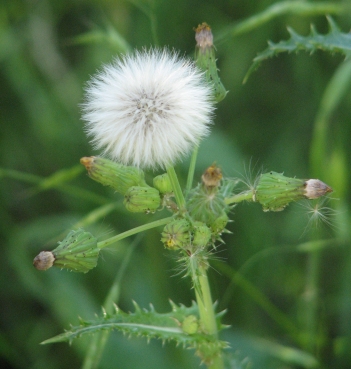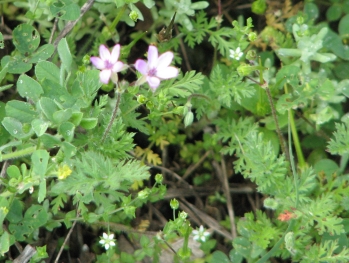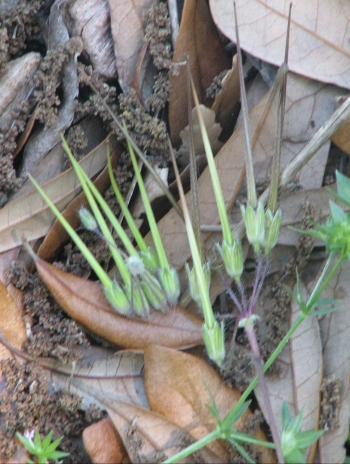Rose of Sharon Hibiscus; Habiscus syriacus. Several hibiscus are cold hardy enough to tolerate Dallas’ weather. H syriacus is originally from southern China, but was collected from Syrian gardens, hence the species name. Although it will not propagate locally, this medium sized, pink to lavender hibiscus is locally perennial, adding a dash of color during summer months. The tough, slightly rough, narrow, but miltilobed leaves alternate along woody stems, sprouting again from leaf nodes in late spring. The five lavender to soft pink, or even blue petals have a darker basal spot where they connect to the long pistol, which like other hibiscus, sprouts short stamen tipped with white anthers toward the tip. The ovaries ripen into dry capsules that crack into 5 sections, allowing the seeds to disperse. Although it can tolerate full sun, this hibiscus does best where the afternoon sun is dappled by shade trees, but it will not do well in dense shade. Mature “trees” have several erect, somewhat leggy, weakly branching ‘trunks’.

Note; a weakly branching, erect, woody tree like bush with narrow, deeply lobed, rough, alternating leaves, producing pink to lavender flowers with a darker basal spot.

Note; alternating leaves with somewhat narrow, deeply cut leaves.


















